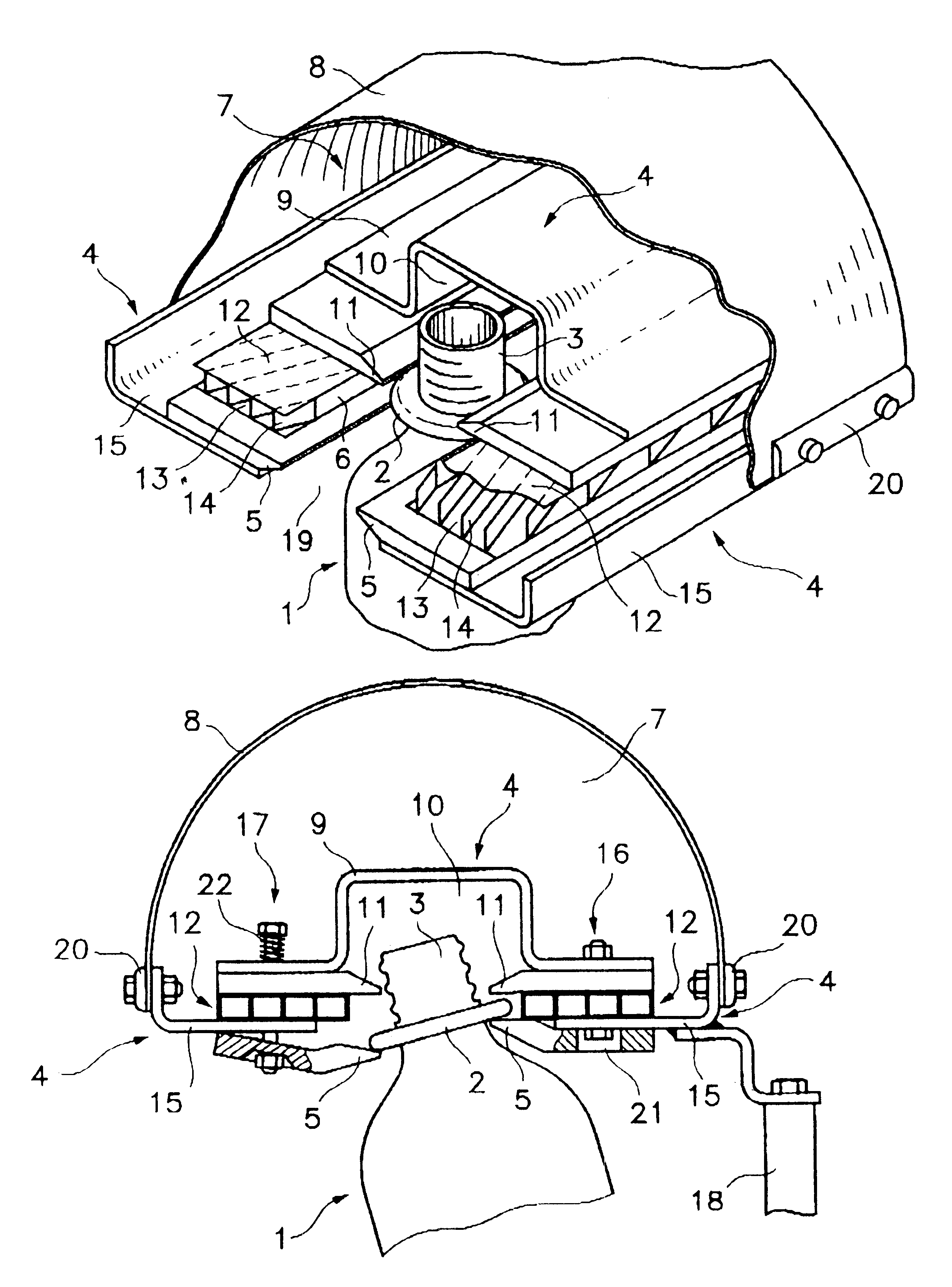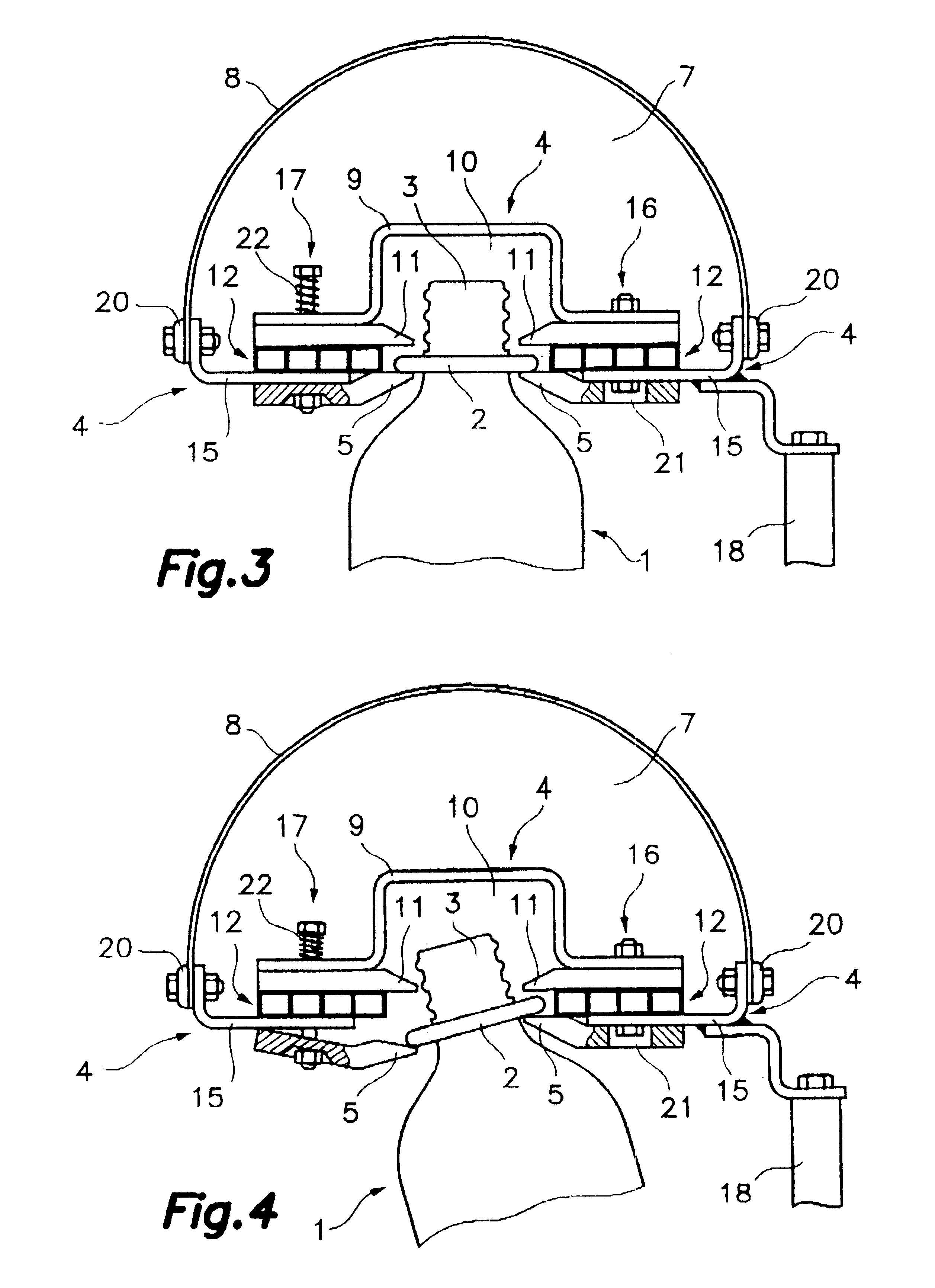Pneumatic conveyor for light-weight empty bottles
a pneumatic conveyor and bottle technology, applied in the direction of conveyors, loading/unloading, transportation and packaging, etc., can solve the problems of significant power loss, clogging of the conveyor guide path, and loss of the advantage of having a double guiding track
- Summary
- Abstract
- Description
- Claims
- Application Information
AI Technical Summary
Benefits of technology
Problems solved by technology
Method used
Image
Examples
Embodiment Construction
Referring first to FIG. 1 (see also FIGS. 3 and 4), numeral 1 designates a lightweight, empty bottle, typically in plastic material, incorporating a flange 2 at the area of its neck 3. The conveyor of the invention comprises a pair of parallel, coplanar supporting tracks 5, on each of which a body 12 is located which defines a plurality of outlet nozzles 6 along said track, and on each body 6 a second upper guiding track 11 is arranged. This way, the sandwiches formed by the tracks 5 and 11 with the body 12 interposed between them are arranged this way, said sandwiches 5, 11, 12 being separate by a gap sufficient for forming a guide path 19 for bottles 1, on which they are transferred, suspended, with the flanges 2 supported and sliding on the lower supporting tracks 5 and guided by the upper guiding tracks 11, under the thrust of compressed air jets ejected by the outlet nozzles 6 in a position favourable to the forwards run of the bottles 1 and which impinge just on the flange 2 a...
PUM
 Login to View More
Login to View More Abstract
Description
Claims
Application Information
 Login to View More
Login to View More - R&D
- Intellectual Property
- Life Sciences
- Materials
- Tech Scout
- Unparalleled Data Quality
- Higher Quality Content
- 60% Fewer Hallucinations
Browse by: Latest US Patents, China's latest patents, Technical Efficacy Thesaurus, Application Domain, Technology Topic, Popular Technical Reports.
© 2025 PatSnap. All rights reserved.Legal|Privacy policy|Modern Slavery Act Transparency Statement|Sitemap|About US| Contact US: help@patsnap.com



